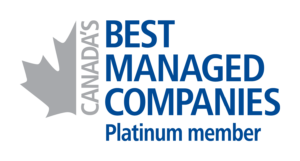Winnipeg, The Logistical Gateway To Western Canada & The USA – White Paper
Logistics and freight corridors in North America are capturing increased attention of many manufacturers and distributors looking for new transportation solutions. One of the reasons behind this trend is the continual rising importance of logistics and the supply chain. Furthermore, Canada and the United States trade $592 billion in goods and services every year, with more than 75% of the goods traded moving by truck. Where does Winnipeg fit in this supply chain solution?
About Winnipeg
 |
|
Winnipeg – Gateway to the west. |
Known as the “Gateway to the West”, Winnipeg is a prominent railway and transportation hub with one of the most diverse economies of any major city in Canada. (Economic Development Winnipeg).
As the capital and largest city in Manitoba, Winnipeg sits at the longitudinal centre of North America and is a critical transportation centre between Vancouver and Toronto.
In addition to being one of the few major cities between Thunder Bay, Ontario and Vancouver with direct rail connections to the USA, Winnipeg also enjoys its place as a major North American trade and transportation merging corridor that heads to points in all directions; north, south, west and east.
Did you know that Winnipeg:
- Is the home of CentrePort Canada, the first tri-modal inland port in the country? It is a *20,000 acre initiative that expedites the seamless movement of goods efficiently and economically to North America, Asia and Europe. (*Economic Development Winnipeg Inc.) Centre Port is designated as a foreign trade zone (FTZ) which positions Winnipeg as an ideal location for intermediate goods processing and distribution.
- Has been a major centre for transportation and distribution for more than a century.
- Offers a most cost effective infrastructure, due to its location at the centre of North America, as well as its affordable real estate and robust supply chain industry; with exponential employment growth in the transportation and distribution sector. In servicing this important market the best in class can survive.
ASL Winnipeg – A Success Story
Best in class transportation providers are customer centric, an advantage that sets them apart in winning and augmenting relationships. The customer benefits from a single point of contact and a swift resolution to issues.
In addition to Winnipeg being an ideal strategic and operational fit, one of the driving reasons for opening a hub in Winnipeg over 35 years ago was at the request and support of a large North American corporation, as well as prospective customers. Additionally, one of the benefits of establishing a facility in this market is the partnering access to some of Canada’s biggest trucking firm home offices.
Winnipeg has become a vital part of ASL’s transportation network, which replicates the same level of services, technology, infrastructure and managerial intensity of the central Canada facilities located in the Greater Toronto Area (GTA). The facility, utilizing the same transportation networks as the GTA, provides services to the major brands that ship to leading retailer DCs in Western Canada, in addition to servicing the local greater Winnipeg customers. Whether it’s LTL, courier or truckload, ASL, between its asset based fleet, as well its non-asset service offerings, optimizes in efficiently moving inbound shipments to and throughout Canada.
Cross Docking
In certain specialized situations, cross-docking or extended cross docking can be the most effective solution.
ASL’s Extended Cross-Dock option has been a remarkable success with the US companies shipping direct to Canadian retailers and wholesalers. Orders placed to ASL are seamlessly prepared; and the freight is shipped to comply with the diverse requirements of Canadian retailers, wholesalers etc complimented by highly competitive intra-Canadian transportation rates. This is proficiently executed for vendors shipping to major retailers such as Walmart, Toys-R-Us, Loblaw, Home Depot, etc.
A major opportunity for savings of international LTL rates fits well with this process. Consequently, Truckload rates can be applied to inbound loads into Canada, and accordingly, domestic LTL rates can be utilized for final distribution. Additionally, many foreign producers may not be familiar with the nuances of the local customer requirements. Even major retailers’ compliance requirements vary from country to country, whether it is different label requirements (i.e. MH10 versus UCC128); different price ticketing requirements in Canada versus the US, through to different type of CHEP pallets. Cross-docking into the Canadian market allows producers to focus on their expertise in their domestic market and leverages the experience of the 3PL in the local market; using that knowledge and market savvy to execute what the local consignees require.
One cannot emphasize enough that the city’s strong multimodal infrastructure and central geographic location at the heart of North America are the foundation to manufacturers and distributors for a robust and growing logistics (warehousing and transportation) sector. Opportunities for success for potential customers’ supply chain needs are unlimited in Winnipeg.
Click on the below link to check out our Youtube Whiteboard!
https://www.youtube.com/watch?v=L3WgFxSn328&sns=em


